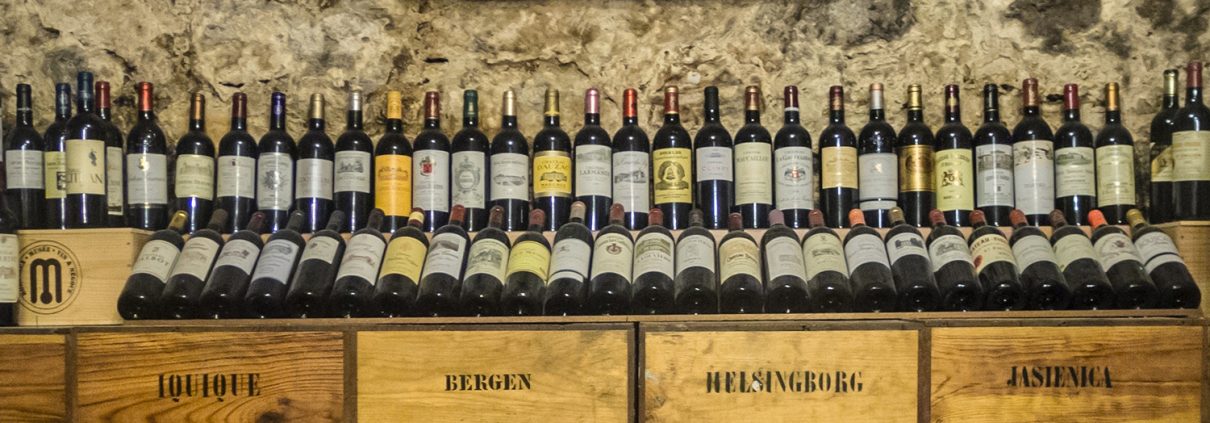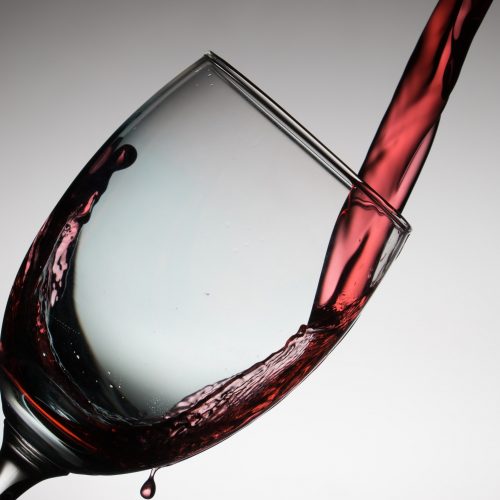關於葡萄酒的一些常見誤解Common Misperceptions about Wine
在全球,葡萄酒是最受歡迎的酒精飲料之一。然而在台灣,葡萄酒並沒有真正受到廣泛接受,或是吸引到年輕和受過良好教育的成年人,以及那些有消費能力的人能夠享用美酒。
台灣一般人仍然喜歡啤酒,紹興(大米)酒或烈酒,另外葡萄酒搭配中國菜也不常見。但是現在漸漸有一些改變,但依然有些對葡萄酒的錯誤認知存在。
以下是關於葡萄酒常見誤解的討論。
1. 所有葡萄酒必須陳年; 葡萄酒的價值隨著年齡增長
這不一定是真的。只有一些精選的葡萄酒隨著年齡的增長而改善,但大多數葡萄酒在購買時已經是適飲期。
另外,要使葡萄酒適宜陳釀,葡萄酒儲存的條件必須是理想的。葡萄酒老化有三個主要標準 – 葡萄酒的類型(是否是一種能夠實際上隨著時間的推移而改進的葡萄酒),葡萄酒保持老化的環境(恆溫,恆濕,穩定的環境),並清楚了解何時葡萄酒會實際發展到頂峰,然後開始劣化。

2. 紅葡萄酒必須在室溫下儲存和飲用
通常,我們聽說紅葡萄酒需要在室溫下品飲,這裡要注意的是,這個室溫指的是歐洲的室溫,即16-18°C。但是,在台灣夏季的室溫可能超過35°C。
因此除了冬季,在台灣將紅葡萄酒存放在16-18°C的受控環境中非常重要。
其他要考慮的因素包括濕度(用軟木塞密封的瓶子),暴露在陽光下(要避免),以及振動和顛簸,都會對葡萄酒的口感產生負面影響。一般來說,如果你只需要存儲少量的葡萄酒幾週,最好將它儲存在冰箱中而不是室溫下。對於葡萄酒愛好者來說,葡萄酒櫃可能是一個不錯的選擇。

3. 每種葡萄酒都需要特定的酒杯
雖然每種葡萄酒都有理想的酒杯類型(形狀),但最好搭配使用,但這並不意味著如果您沒有特定葡萄酒的特定杯子,您就無法享用葡萄酒。
只要你有一個稍微寬一些的碗型(不是長型)的杯子,這是完全可以接受的你只填滿酒杯的底部1/5,然後平穩地旋轉酒(不要急劇旋轉),讓葡萄酒的酒香溢出到玻璃杯口中。聞著葡萄酒香氣是品嚐葡萄酒的樂趣的一部分,並為品嚐葡萄酒的口感做準備。 拿著酒杯上的酒莖而非直接握住杯子,否則你會把手上的熱量轉移到酒上而改變它的口感。當然,某方面來說,這也是一種加熱一杯太冷的葡萄酒方法。

4. 甜葡萄酒適合葡萄酒新手
根據您的口味和口感,如果您與特定食物配對,您可以享用甜酒或干白酒。有許多葡萄酒鑑賞家喜歡更甜的葡萄酒。更甜的葡萄酒不是不成熟的感覺,也不僅僅是女性飲用。它們的糖含量較高因此很甜。紅葡萄酒和白葡萄酒可以甜或干。 有些人喜歡更甜的葡萄酒,而不是單寧更多的葡萄酒,因為這種甜味提供了一個很好的平衡,並可以像甜酒一樣順口。再一次強調葡萄酒是個人偏好 – 沒有絕對的!

5. 把香料添加到酒中
當人們談到葡萄酒中的水果味或煙熏味時,它可能會混淆葡萄酒新手。然而葡萄酒的口味取決於特定的葡萄,每種葡萄酒的釀造方式(以及混釀的方式)及葡萄酒的儲藏方式。
葡萄酒發展自己的口味,並且經常類似某些水果或花的氣味,這取決於其性質。如果酒存放在木桶中,葡萄酒的味道會受到他們陳年的木桶影響。因此,正常的葡萄酒完全天然根本沒有添加任何調味劑。

6. 法國葡萄酒是最好的葡萄酒
法國幾個世紀以來一直生產葡萄酒,並將葡萄酒出口到世界各地,直至今日。法國的條件非常適合葡萄園,因此法國有大片的葡萄酒生產土地。因此許多人認為葡萄酒的適合口味應該是法國葡萄酒口感這並不令人驚訝。
然而除法國外,現在還有許多其他國家生產多種優質葡萄酒。對於葡萄酒中的探索可以持續一輩子,讓您探索嘗試各個國家的葡萄酒。然後您可以發現您對葡萄酒口感的喜好,並了解您喜歡哪些葡萄酒、來自哪些國家和葡萄酒種植區。
每個國家都有生產優質葡萄酒,在這種情況下,所謂的 “最佳” 具有很高的主觀性,並不一定受價格影響。

7. 用軟木塞瓶的葡萄酒才是最佳品質的
葡萄酒瓶以三種方式密封 – 傳統瓶塞、金屬螺旋蓋或塑料螺旋塞。
雖然許多人認為傳統的軟木塞葡萄酒是最好的,但是釀酒師常常使用螺旋蓋,因為保存軟木塞裝瓶的酒往往會帶來不方便。葡萄酒瓶必須傾斜或軟木塞可能會改變葡萄酒性質(極端是軟木污染)。
一般來說無論是螺旋蓋還是軟木塞頂部,都不應該改變酒裡的香氣和品質。現在有兩種思想主流:許多現代釀酒師更喜歡螺旋蓋,因為它們更加穩定(不會變質),並且更容易打開帶有螺旋頂部的瓶子(並且不是每個人都可能始終帶有軟木塞開瓶器);然而回歸傳統的人們認為帶有軟木塞的葡萄酒瓶提供了更高品質的體驗。也因此在這個問題上至今仍然不斷爭議。

Some Common Misperception about Wine
Globally, wine is among the most popular alcoholic beverages. However, wine has not really gained wide acceptance in Taiwan, is appealing to younger and more educated adults, and those with the spending power to be able to enjoy fine wine. The population at-large in Taiwan still prefers beer, shao hsing (rice) wine or hard spirits, to grape wine. Also, it not that common to pair grape wines with Chinese cuisine. However, there is some gradual changes occurring. The following is a discussion on some common misperceptions about wine.
1. All Wines must be Aged; Wines Improve with Age
This is not necessarily true. Only some select wines improve with age, but most wines are ready to drink, when purchased. In addition, for wines to age properly, the conditions, under which wine is stored, must be ideal. There are 3 major criteria to the ageing of wines – the type of wine it is (whether it is a wine that is capable of actually improving over time), the environment that the wine is kept under for ageing (constant temperature, humidity, stability of movement), and a clear understanding of when a wine will actually mature to its peak, and then begin to deteriorate.
2. Red Wine must be Stored and Consumed at Room Temperature
Often, we hear that red wine needs to be drunk at room temperature, the caveat here is that this room temperature refers to room temperature in Europe, which is 16-18°C. However, in Taiwan, room temperature can exceed 35°C in the summer months. Therefore, except for winter, in Taiwan, it is important to store your red wines in a controlled environment at about 16-18°C.
Other factors to consider include humidity (for bottles sealed with a cork), exposure to sunlight (to be avoided), and vibrations and jolting, can negatively affect the taste of wines. Generally, if you need to store wine for only a few weeks, it is better to store it in the refrigerator than at room temperature. For wine aficionados, a wine refrigerator may be a good investment.
3. Each Wine requires a Specific Wine Glass
While it is true that each type of wine has an ideal wine glass type (shape) it is best paired with, this does not mean that you cannot enjoy a wine, if you do not have the specific glasses for a particular wine. As long as you have a stem glass with a slightly wider bowl (not a flute), this is entirely acceptable. You only fill the bottom 1/5 of the wine glass, then steadily swirl the wine (never swirl sharply), allowing the bouquet of the wine to escape into the mouth of the glass. Smelling the wine its part of the enjoyment of tasting the wines, and prepares the palate for the taste of the wine. Hold the wine glass by the stem, otherwise you will transfer the heat from your hands to the wine, thus altering its taste. However, this is a way to warm a glass of wine that is too cold from being refrigerated.
4. Sweet Wines are for Wine Novices
Depending on your palate and your taste, and if you are pairing with specific foods, you can enjoy of either sweet or dry wine. There are many wine connoisseurs who prefer sweeter wines. Sweeter wines are not immature tastes nor only for women. They just have a higher sugar content and hence, are sweet. Red and white wines can be sweet or dry. Some prefer sweeter wines, as opposed to wines with more tannin, as the sugar provides a nice balance and goes well as a dessert wine. Again, “Beauty is in the Eye of the Beholder”, and wine is a personal preference – there are no absolutes!
5. Flavors are Added to Wine
It might confuse wine novices, when people speak of fruity or smoky flavors in wine. However, the taste of wine depends on the particular grapes, the way each wine is processed (and in some cases, blended), and how the wine is stored. Wines develop a taste of their own and often resemble the smells of certain fruits or flowers, depending on the properties. If wine is stored in wooden barrels, wine taste will be influenced by the barrels in which they are aged. Wines are completely natural and have no flavoring added to them at all.
6. French Wine is the Best Wine
France has been producing wines for centuries, and exporting their wines all over the world, up to the present day. French conditions are ideal for vineyards and thus, there are a large expanse of land dedicated to the production of wine in France. Therefore, it is not a surprise that many people feel that the “proper” taste of wine should be the way that French wines tastes. However, there now are many other countries, besides France, that produce many varieties of outstanding wine. The adventure in wine, which can last a lifetime, is to become adventurous, and try wines “outside of your comfort zone”. Then you can develop you wine palate, and understand what wines you prefer, from what countries and wines growing areas. Quality wines are being produced in every country. In this case, “Best” is highly subjective, and is not necessarily driven by price.
7. The Best Quality Wines come in Corked Bottles
Wine bottles are sealed in three ways – the traditional bottle cork, metal screw top, or plastic screw top. While many believe that the traditional corked wines are the best, screw tops are often used by winemakers, since keeping a bottled corked often gets a little inconvenient. The wine bottle has to be tilted or the cork may change in character (the extreme being cork taint). Generally, whether screw cap or cork top, there should be no change in the flavor and the quality of the wine inside. There are two schools of thought. Many modern winemakers prefer screw caps, as they are more stable (no deterioration), and it is easier to open a bottle with a screw top (and not everyone may have a cork screw with them all the time). However, falling back on tradition, the perception is that wine bottles with a cork seal, provides a higher quality experience. Again, the verdict is still out on this issue.



